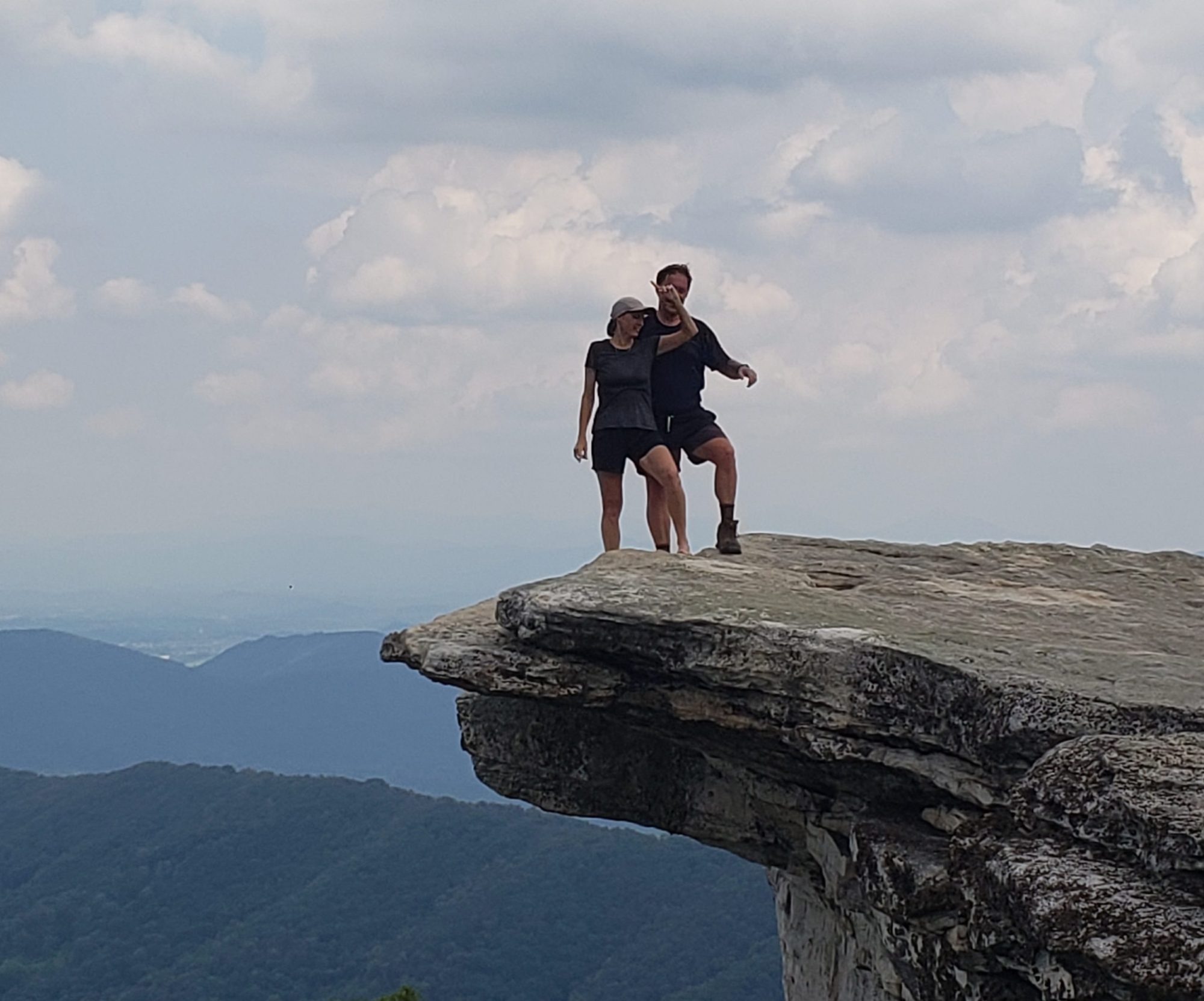





We wonder if these prints will end up being fossilized? We have never seen such clear prints as these.

Bear 
Raccoon
Trail maintainers often throw the long distance hiker a bone with signage such as this. We were walking in the direction of 1/4 GA–>ME. We discussed whether this would encourage or discourage future progress?
Stiles help a hiker cross farm fences while keeping the animals in their place. This one was particularly steep but not rickety. Check out the view from above the stile on the right.

















































